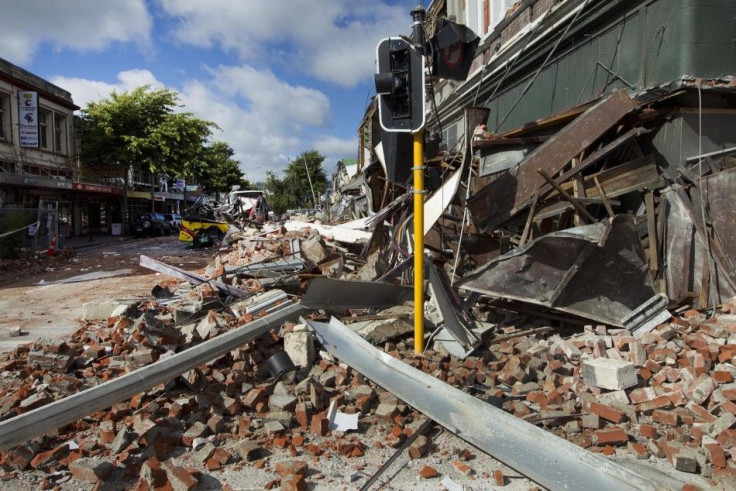Earthquake Warning System Goes Live In California

Earthquakes can't be predicted, but getting to safety quickly can make all the difference in the number of dead or injured people. In California, a startup has developed a way to give at least a few extra seconds warning.
The system is called QuakeGuard, and it was developed by a Scotts Valley, Calif.-based startup called Seismic Warning Systems. It detects the shaking from earthquakes called P waves that are sometimes -- but not always -- felt by people just before the larger, more destructive waves arrive.
Seismic Systems has historically installed their technology in commercial buildings, and now a group of local governments has plans to install 120 of their stations in an area around Palm Springs, Calif. The detectors will be in public schools, and local businesses can subscribe to get the warnings. When complete, it should provide at least several seconds of warning before an earthquake hits.
The P wave is the thing you feel and you ask 'was that an earthquake?' said Michael Price, chief technology officer at Seismic Warning Systems. Then while you are trying to figure out if it's an earthquake the real shaking starts. The more destructive S, or shear waves, are the ones that people usually see and feel. They travel more slowly than the P waves and usually arrive a few seconds to a minute later, depending on how far away the center of the earthquake is.
A traditional seismograph is built to study earthquakes that are far away, so they are very sensitive. They also they stop working when the shaking gets violent. Seismic Warning Systems' device is designed for a different problem, Price said. That is how to see a P-wave and be able to measure it when it is at the top and transmitting the maximum energy. The dynamic range has to be a lot larger, Price said.
The next step is to figure out if what the detector felt was a P-wave and whether it presages a large earthquake or a small one. That requires sophisticated software. In addition, the devices can be integrated with other systems in a building, such as water or gas valves which can be shurt off, or fire station doors, which can be opened.
Generally, every 3.6 kilometers (2 miles) between the center of an earthquake and the detector is a second's warning. That may not sound like much, but most earthquakes are several kilometers below ground. Another factor is that quakes can stretch for hundreds of miles in any direction, and the most destruction often isn't at the center but many miles away. In addition, even a small warning can be crucial. In an earthquake, seconds count, said Scott Nebenzahl, director of government affairs at Seismic Systems. This could, for instance, get a fire house's door up before the really destructive waves hit.
Price noted that this system would not have provided much warning to the people in the Christchurch, New Zealand. That quake was relatively shallow, and Seismic Warning Systems' devices would have only sounded the alarm a few seconds in advance.
But during the 1994 Northridge quake, there would have been several seconds at least - enough time to close gas and water valves. Much of the dam age during that quake was from ruptured gas lines that caused fires. The same is true for the Loma Prieta earthquake that occurred in 1989. Generally even if a building collapses you can survive if it doesn't catch fire, Price said.
However, one important part of the system is people. When they hear a warning, they have to know what to do and how to react. That will require some education. People have to know what an earthquake warning means in the same way they know what a fire alarm does. You want to get into a posture where you can prepare, Price said.
To contact the reporter responsible for this story call (646) 461 6917 or email j.emspak@ibtimes.com.
© Copyright IBTimes 2024. All rights reserved.





















